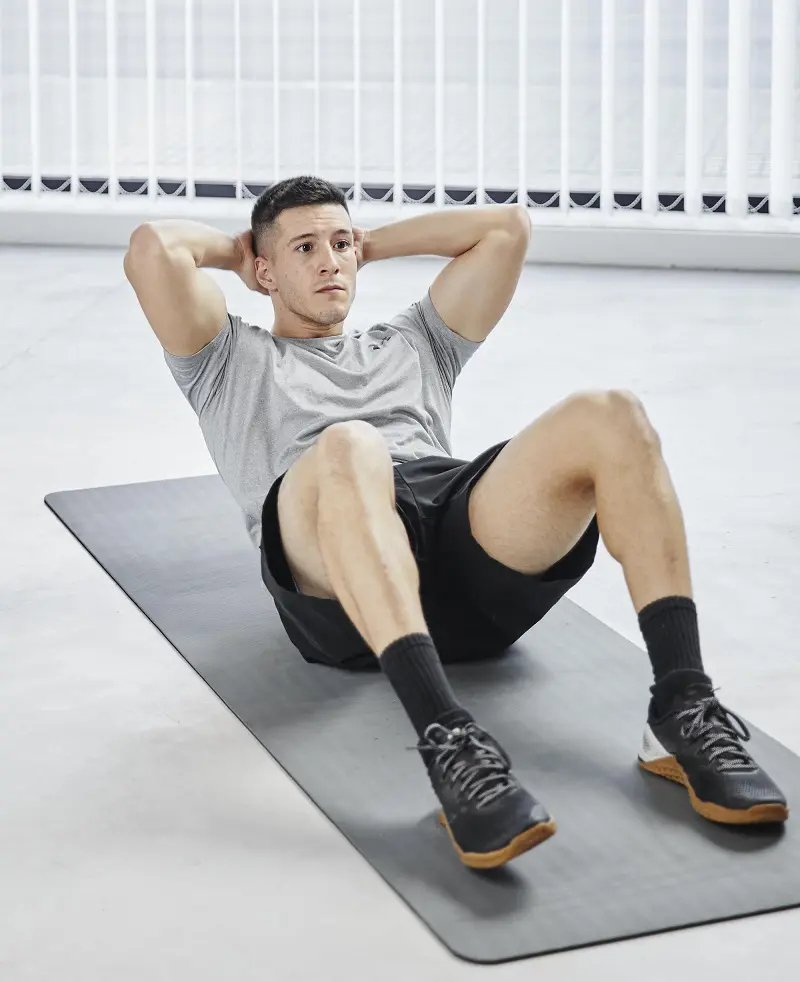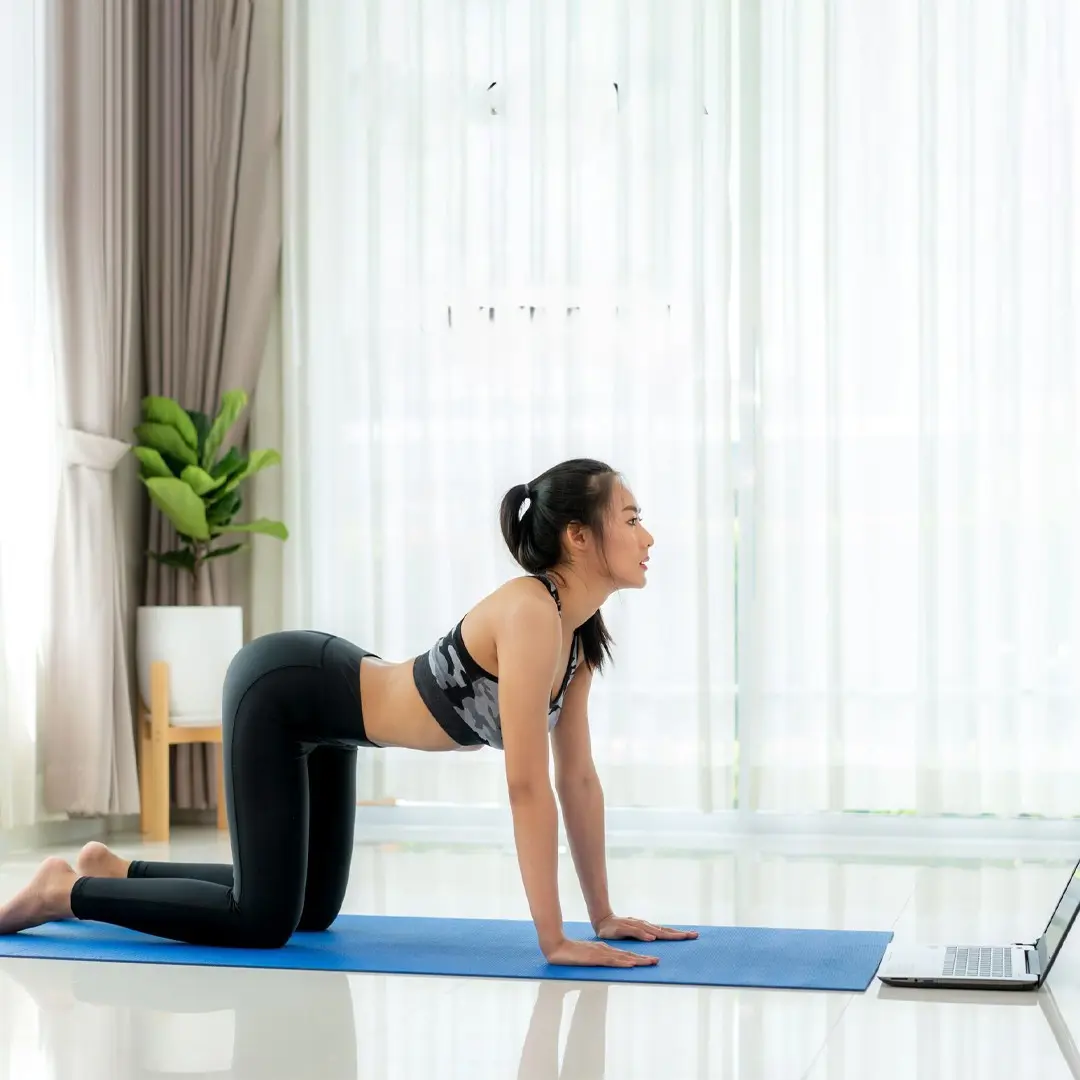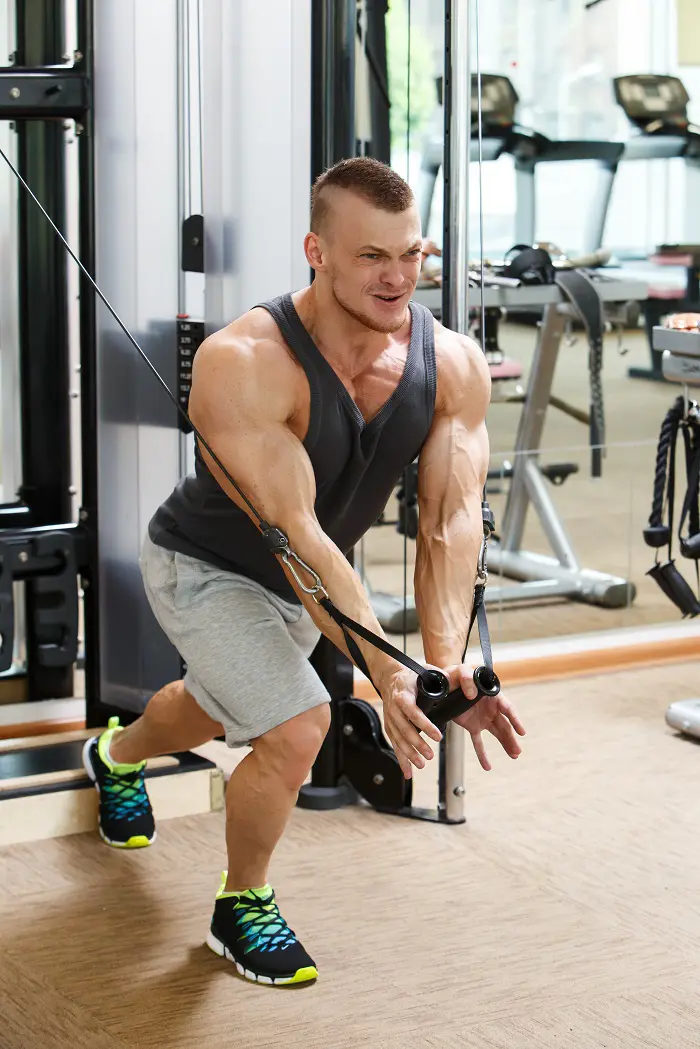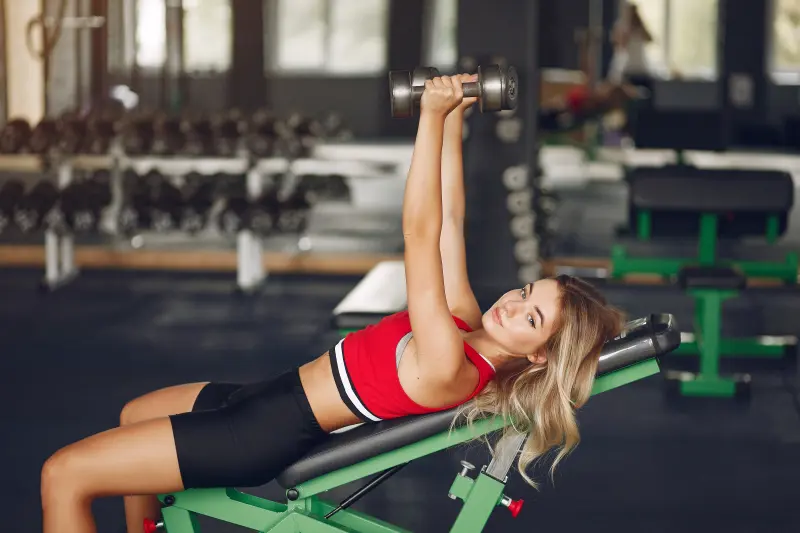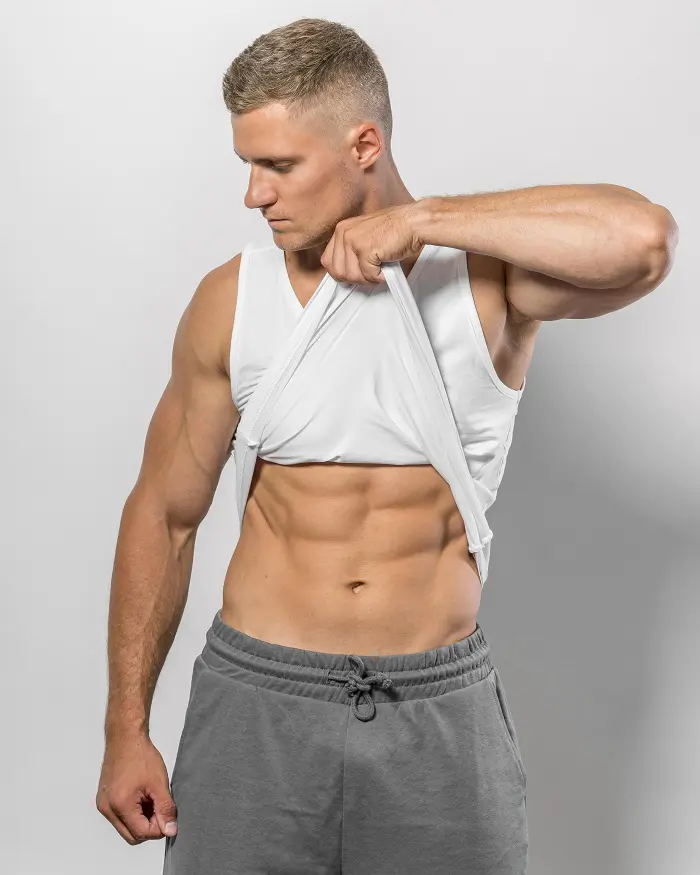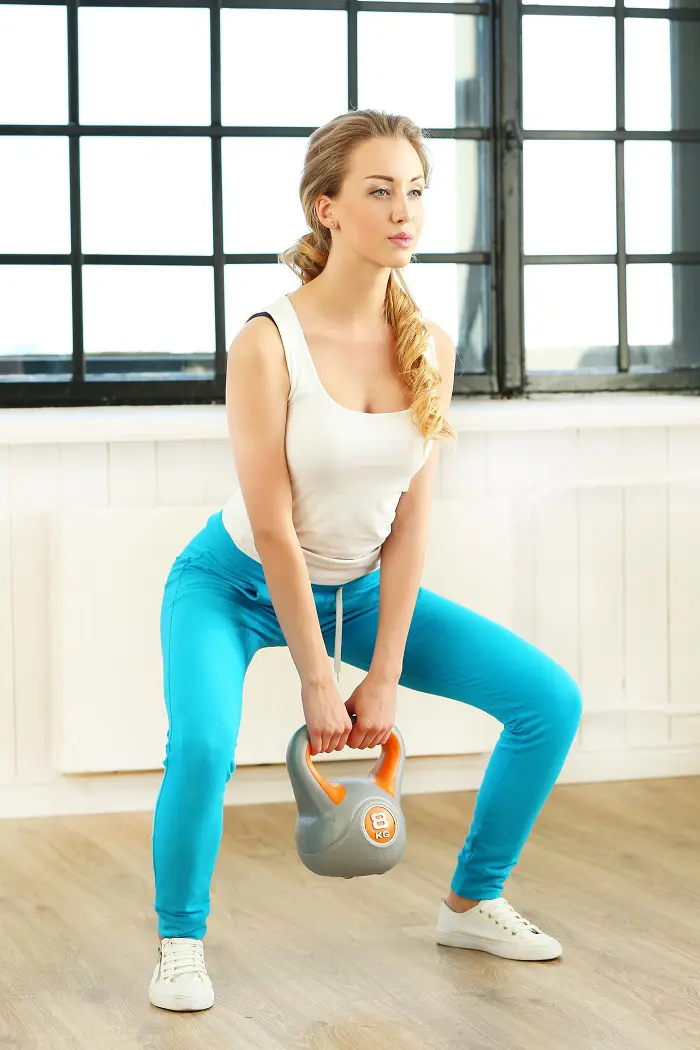11 Upper Chest Exercises To Develop Toned And Strong Pecs
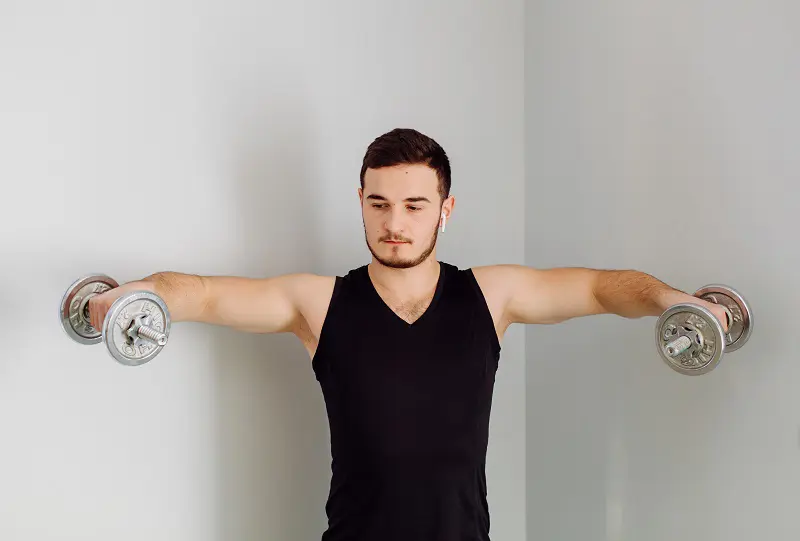
A well-defined upper chest improves posture and upper body strength along with your overall appearance. It takes certain workouts that focus on the clavicular head of the pectoralis major to target the upper part of the pectoral muscles.
Including the proper upper chest workouts is crucial whether your goal is to increase muscular mass, improve symmetry, or improve your performance on the bench press. So, here are the top 11 upper chest exercises to develop toned and strong pecs:
1. Incline Bench Press
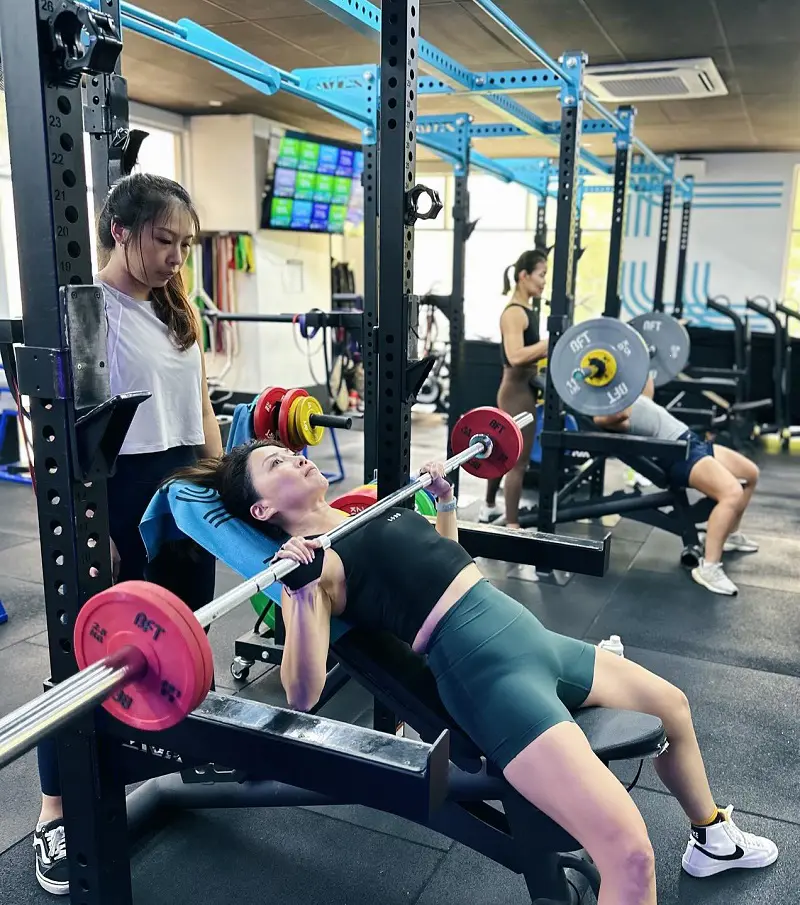
An excellent exercise for strengthening the upper part of your chest is the incline bench press. Compared to a typical flat bench press, the incline bench's tilted posture more precisely targets and stimulates these upper pec fibers.
This is because your upper chest muscles are the main movers throughout the workout since the incline places your body in a more direct line with the weight.
Steps to Do It:
- Start by gently unracking a barbell while seated on an inclined bench.
- With your arms outstretched, hold the bar just above your shoulders.
- Inhale, then gently bring the barbell down to your chest.
- Exhale as you completely stretch your arms and push the barbell back up to the beginning position.
- For as many repetitions as you like, repeat the lowering and raising movements.
2. Incline Dumbbell Press
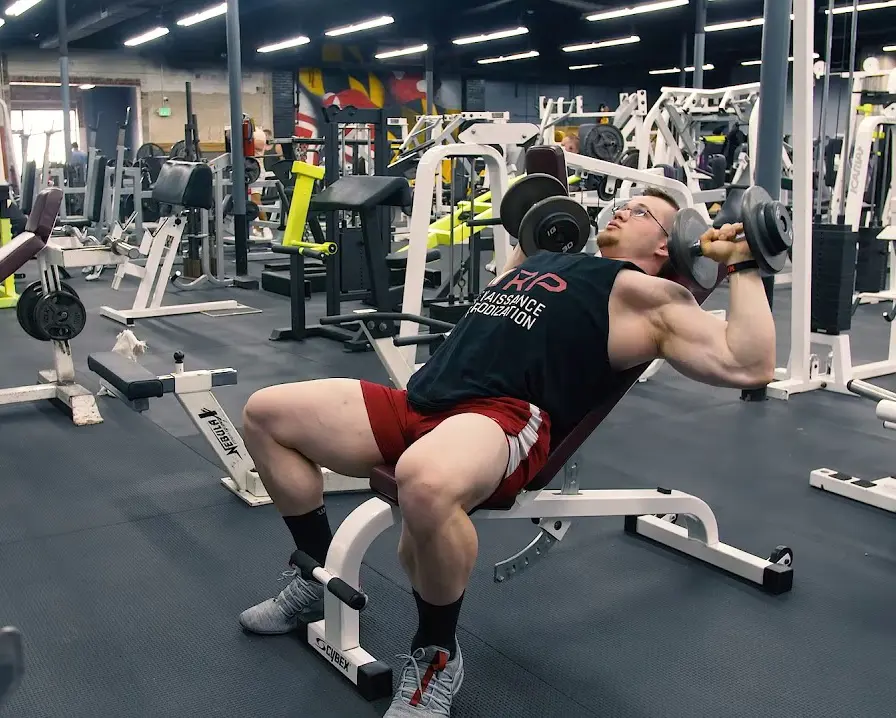
Similar to the incline barbell press, the incline dumbbell press emphasizes building the upper chest. This exercise uses two dumbbells, one in each hand, in place of a barbell. Because each arm can move separately, this crucial distinction offers a wider range of motion at the shoulder joint.
This range of motion may aid in activating the stabilizer muscles and result in a more natural lifting pattern. Also, because each arm is exercising separately, using dumbbells can correct your muscle imbalances.
How To Do It:
- Place yourself on a bench and, with your arms bent and the dumbbells resting on or slightly above your shoulders, raise one dumbbell in each hand to the beginning position.
- Exhale as you completely stretch your arms and press the dumbbells upward.
- Breathe in as you carefully and gently bring the dumbbells back down to your shoulders.
- For as many repetitions as you like, repeat the lifting and lowering stages.
3. Bench Press
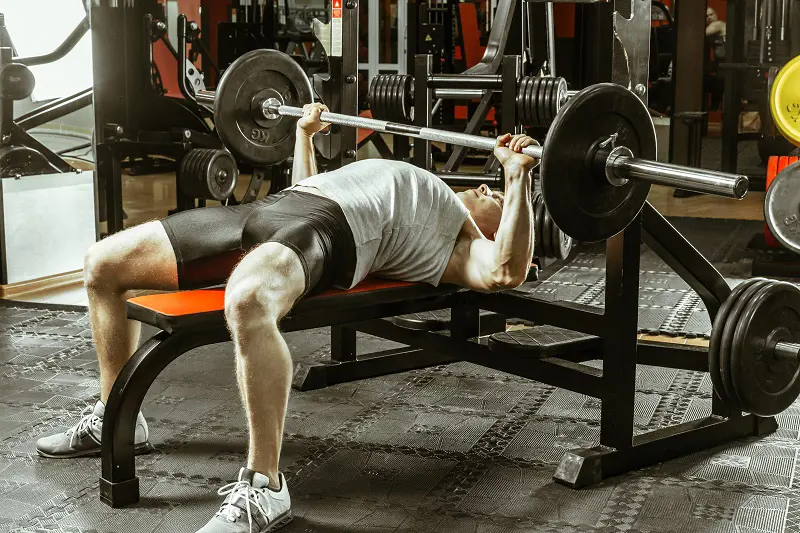
The flat bench press is still an essential exercise for developing the overall chest, even if incline presses are great for focusing on the upper chest. The flat bench press efficiently works the upper, middle, and lower pectoral muscles, even though it does not isolate the upper chest as much as incline presses.
This comprehensive muscle activation contributes to substantial growth across the entire chest, leading to overall size and strength gains. While incline presses might be slightly more effective for emphasizing the upper chest, the flat bench press provides a solid foundation for balanced chest development.
Steps To Do It:
- While lying on the bench, make a little arch in your lower back and draw your shoulder blades back and down.
- Hold the barbell with a grip wider than shoulder-width apart.
- Take a breath, hold it, and then unrack the barbell until it is just over your chest.
- Carefully and slowly lower the bar until it lightly brushes your chest, around where your sternum is.
- Exhale as you completely stretch your arms and push the barbell back up to the beginning position.
- Repeat the raising and lowering steps as many times as you like, taking another breath at the top.
4. Close-Grip Bench Press
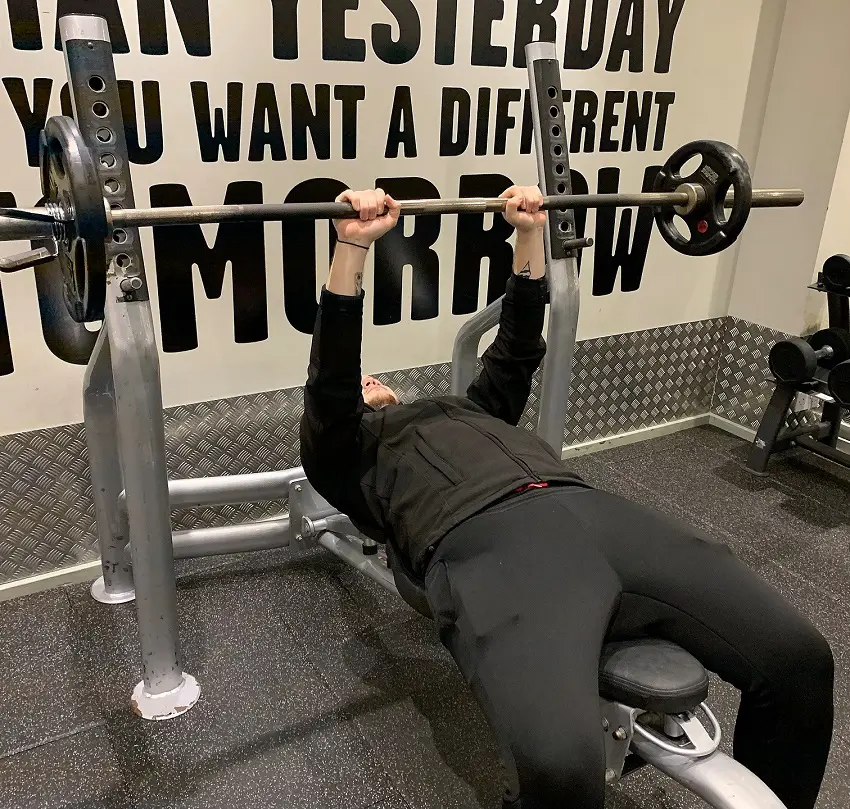
Depending on how the elbows are positioned, the close-grip bench press, a variant of the conventional flat bench press, can also be utilized to target the upper chest. The secret to doing this exercise to highlight the upper chest is to regulate your elbow posture.
You can shift the focus of the exercise by keeping your elbows close to your sides the whole time. In this position, your front shoulders and upper chest do most of the work.
Steps To Do It:
- Pull your shoulder blades down and back while lying on the bench, and make your lower back slightly arched.
- Place your hands precisely above your shoulders or a little bit closer together while holding the barbell in a narrower grip than you would for a typical bench press.
- Take a breath, hold it, and then unrack the barbell so that it is over your chest.
- Carefully lower the bar till it reaches your chest close to the base of your ribs.
- Exhale as you completely stretch your arms and push the barbell back up to the beginning position.
- Repeat the raising and lowering steps as many times as you like.
5. Overhead Press
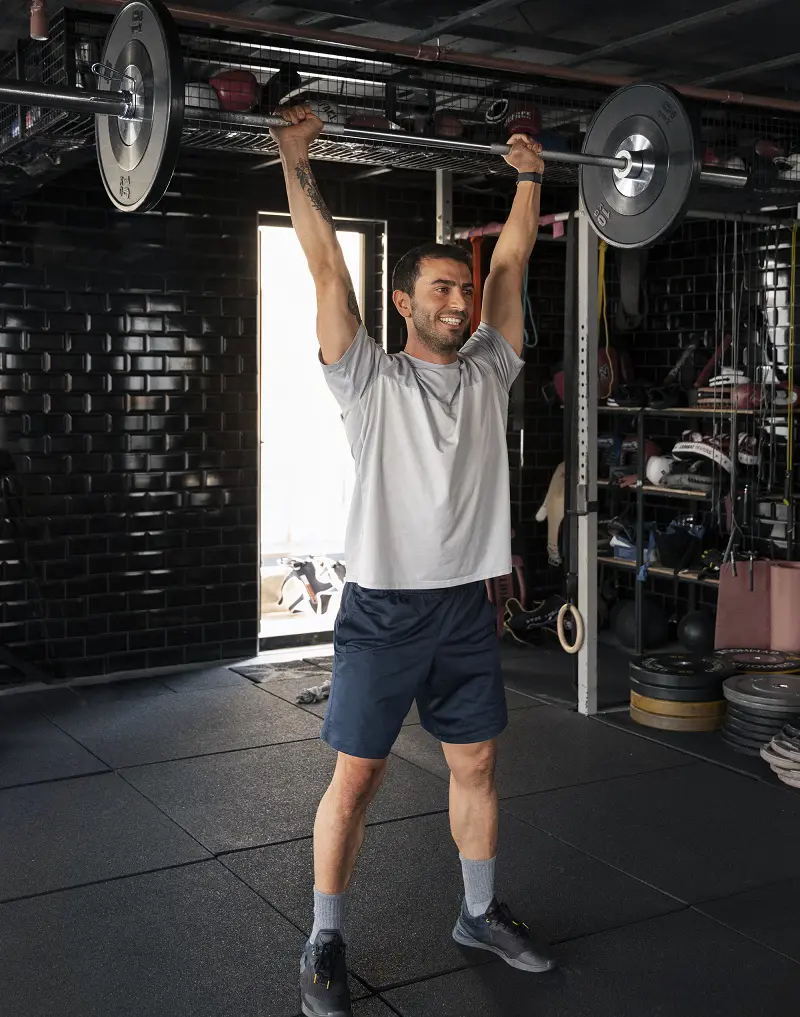
The overhead press is a compound exercise that primarily targets the shoulder muscles, specifically the front and middle portions, but it also engages the upper chest to a significant degree. The extent to which the upper chest is involved depends on the amount of lean in your back during the exercise.
A more noticeable lean back will increase the involvement of the upper chest, as it shifts the angle of the press and brings the upper pectoral muscles more directly into the movement. Conversely, a more upright posture will reduce upper chest activation, placing greater emphasis on the shoulders.
Steps To Do It:
- Hold the bar with a little broader grip than shoulder-width.
- Breathe in, unrack the bar, and softly brace your core.
- Step back from the rack and let the bar rest against your front delts.
- Exhale as you press the bar up to straight arms.
- Take a breath at the peak or as you carefully drop the bar back to your shoulders.
6. Low To High Cable Chest Fly
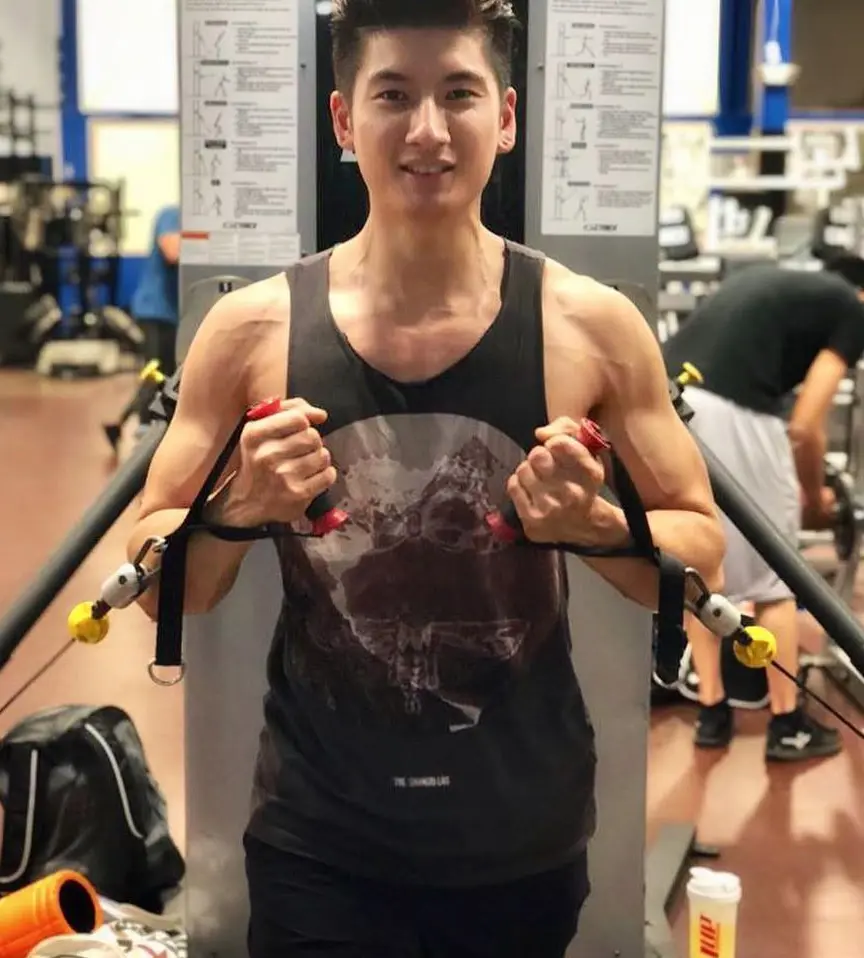
An isolated exercise made especially to target the pectoral muscles is the cable chest fly. This exercise is a good way to work the upper chest when you put the cable pulleys low and pull the grips upward and inward.
The upper pectoral fibers fire up right away thanks to the low-to-high pull of the cables, keeping tension throughout the movement. Since it highlights the arms' crossing motion, this exercise is often called the cable crossover.
Steps To Do It:
- Secure a pair of handles to a cable machine in a low position.
- Lean slightly forward, step forward, and grasp the handles.
- Push the handles forward until they touch in front of your chest while keeping your arms slightly bent.
- Allow the handles to return to their initial position while maintaining control.
7. Machine Chest Fly
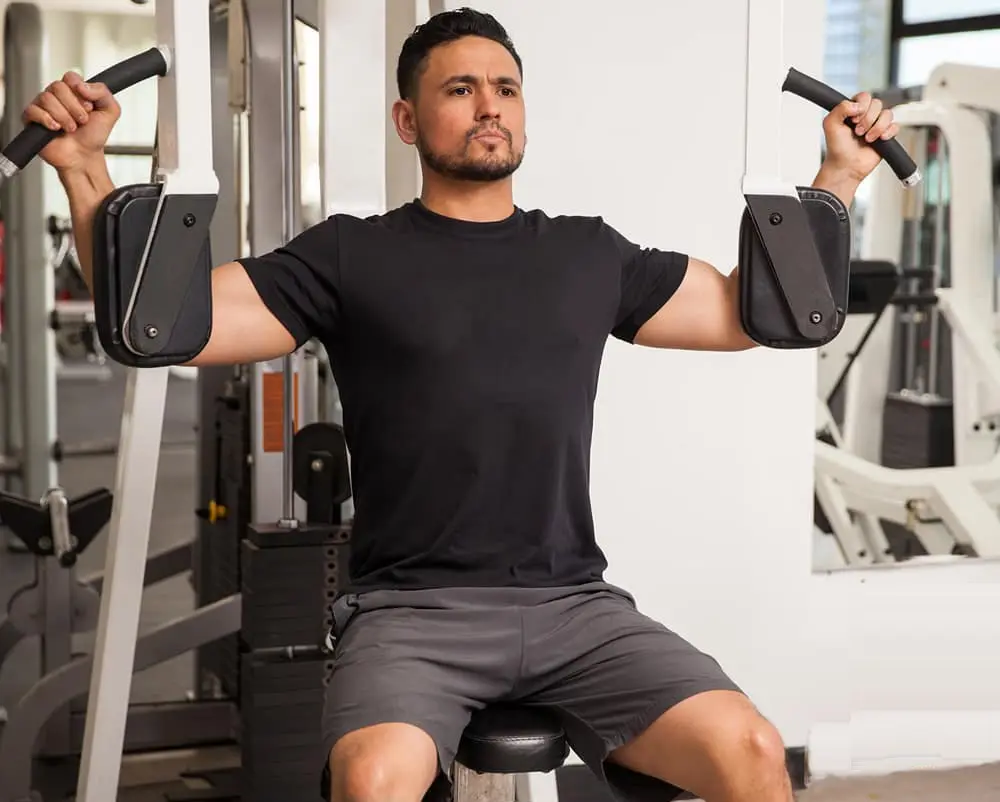
A form of the chest fly exercise, the machine chest fly separates the pectoral muscles and the front parts of the shoulders, much like other chest fly movements. As with the lying-down dumbbell chest fly, the machine chest fly works every muscle fiber in the pectoral group, which includes the upper chest.
For people who are unfamiliar with the exercise or who prefer a more regulated movement, the machine's guided range of action can be useful. The machine chest fly can be a helpful technique for developing the entire chest, including the frequently targeted upper chest area because it targets all of the chest fibers.
Steps To Do It:
- Adjust the handles and back support to get a full range of motion and position the handles at shoulder height.
- Push the handles forward until they touch in front of your body while keeping your arms slightly bent.
- Allow the handles to return to their initial position while maintaining control.
8. Dumbbell Chest Fly
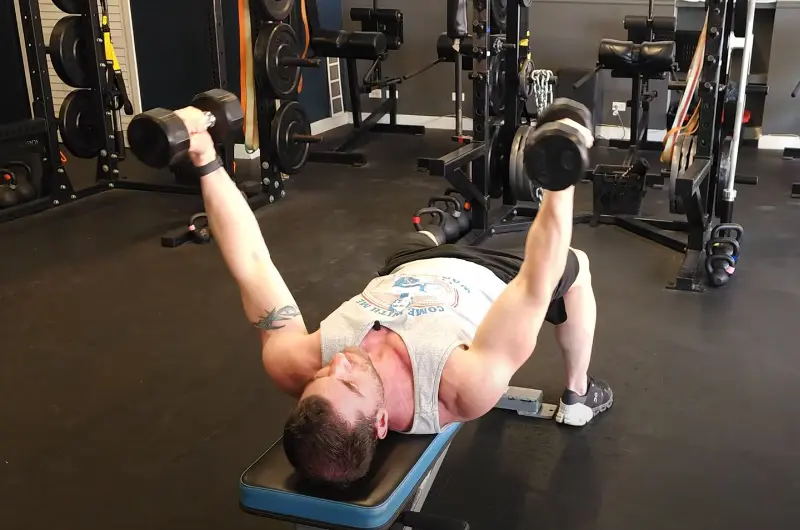
A solitary exercise that works the chest and front of the shoulders, the dumbbell chest fly works all of the pec muscle fibers, much like the bench press, and helps build a larger chest.
You can do this exercise on a bench that is slightly angled if you want to emphasize the top part of your chest more. By altering the exercise's focus, this inclination promotes the activation and growth of the upper pectoral fibers.
Steps To Do It:
- Lying on a bench, raise a pair of dumbbells to the starting position.
- With your arms nearly straight, bring the dumbbells down to your sides.
- Return the dumbbells to their starting position after dropping them as far as you can.
9. Decline Push-Up
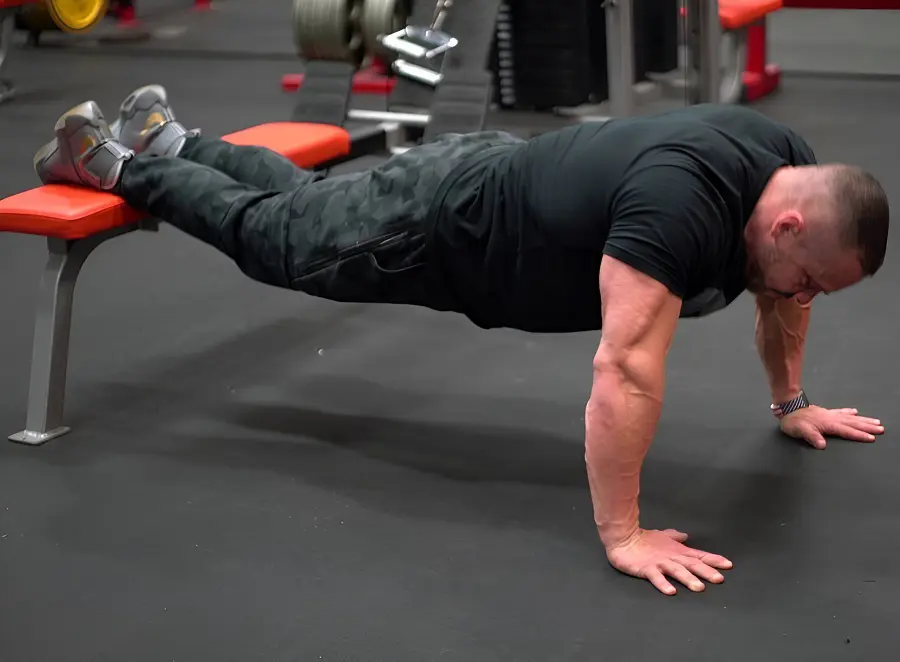
A modified form of the regular pushup is the decline pushup. Your body is tilted downward when you create a drop by placing your feet on an elevated surface, such as a box or bench. The emphasis of the workout is shifted by this change in body posture, which puts more strain on your upper chest and shoulders.
Compared to a standard pushup, the decline pushup is a more difficult and efficient exercise for developing shoulder and chest strength because of the downward angle, which makes these muscles work harder to push your body weight.
Steps To Do It:
- When you kneel, your back should be facing a bench. With your hands on the floor, position your shoulders above your wrists and your elbows at a 45-degree angle. Place both of your feet on the bench.
- Get your core, glutes, and quadriceps ready. Bend your elbows and lower your chest to the floor while maintaining a straight neck and back.
- Push into the floor while extending your elbows to return to the starting position.
- Complete around two to four sets of eight to twenty repetitions.
10. Dumbbell Front Raise
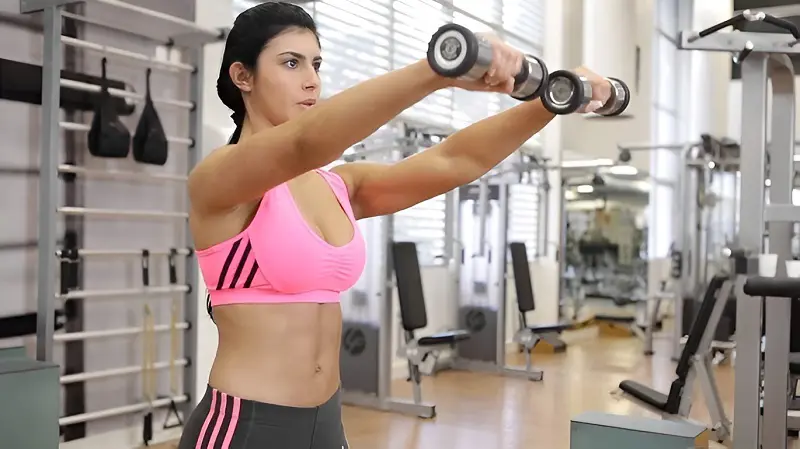
The dumbbell front raise is a fantastic isolated exercise designed to build power in the muscles that lift your arm forward and away from your body. It primarily targets the anterior deltoids, with some activation in the upper chest.
Steps To Do It:
- As you lift the weights, take a breath. Your arms are extended, palms down, with your elbows bent slightly to reduce joint tension.
- Take a brief break until your arms are shoulder-height and parallel to the floor.
- Lower the dumbbells gently and methodically to the starting position (at the thighs) as you release your breath.
11. Barbell Landmine Raise
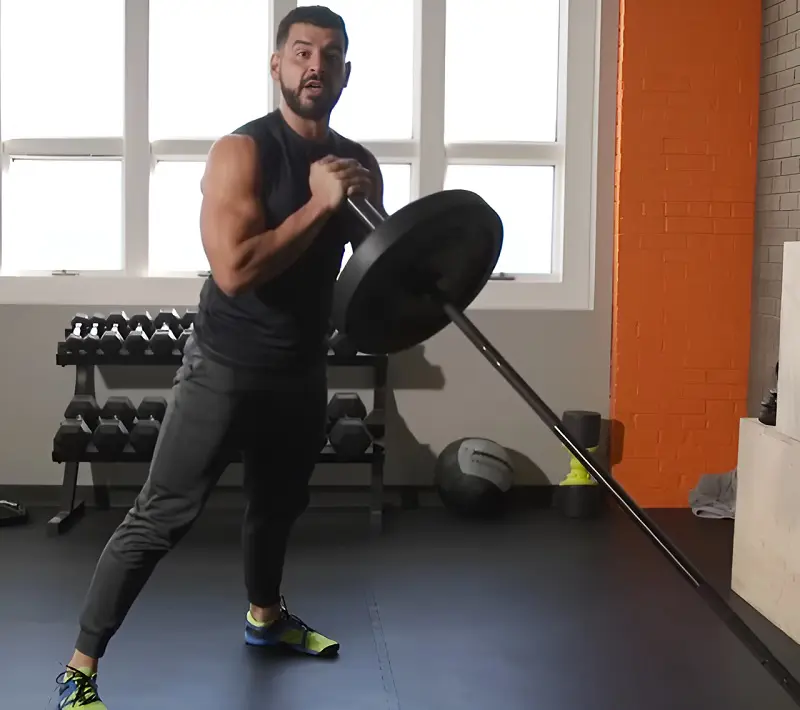
The barbell landmine raise is a variation of the lateral raise exercise designed to target the shoulder muscles as well as the upper chest. This unique variation utilizes a barbell anchored at one end, creating a somewhat fixed plane of motion for the exercise.
This controlled movement helps to isolate the shoulder muscles, specifically the medial (side) deltoids, which are the primary targets of lateral raises. Compared to other standing lateral raise variations, the landmine setup also incorporates the posterior (rear) deltoids to a slightly greater extent.
Steps To Do It:
- Wedge the barbell into a corner or secure one end in a landmine attachment.
- Place your feet shoulder-width apart and keep your spine neutral.
- With both hands, grasp the barbell's free end while maintaining your arms out in front of you. For stability, keep your knees slightly bent.
- As you raise the barbell in an arcing motion to shoulder height, contract your shoulders and core.
- Return to the starting position with the barbell slowly, keeping control of the action.
- As you complete the required amount of repetitions, make sure to use good form and breathe properly.
Recent posts
Fitness
Fitness
10 Core Strengthening Exercises For Beginners To Try At Home
A strong core is key to overall fitness - it helps improve posture, stability, and balance while cutting down the risk of injury. Whether you're new to working out or just looking to level up your core strength at home, these beginner-friendly moves ...
Fitness
How To Do Cat Cow Yoga Pose: Benefits, Techniques And Types
Cat Cow Yoga pose is an essential exercise that involves moving the spine from a rounded position to an arched one. Each movement is done flawlessly in conjunction with either an inhalation or exhalation of the breath, linking it to movement. This po...
Fitness
12 Best Cable Shoulder Exercises And Workouts
Shoulder workouts are essential for strengthening the deltoid muscles, improving range of motion, and enhancing posture. Using a cable machine can be a great way to build strong, well-defined shoulders. Cables offer a solid alternative to dumbbells a...
Fitness
How To Do Chest Fly Exercise: Methods, Benefits And Types
The chest fly is primarily done to strengthen the chest and the shoulders. It can be done while lying on your back on a flat or inclined bench and knees bent at a 90-degree angle. People who just started their fitness journey can use a lighter weight...
Fitness
A Guide On How To Get A Six Pack And Develop Shredded Abs
Six-pack abs come from having a low body fat percentage, which makes your abdominal muscles more visible. To get them, you need a mix of factors - solid diet, regular workouts, and a consistent training routine. Building strong ab muscles takes time,...
Fitness
12 Weight Bearing Exercises To Enhance Bone Density
When practicing weight bearing exercises, your legs will support your body weight. These workouts include resistance and balance training, which help strengthen your bones and muscles. This category includes many bodyweight moves, like push-ups, squa...
